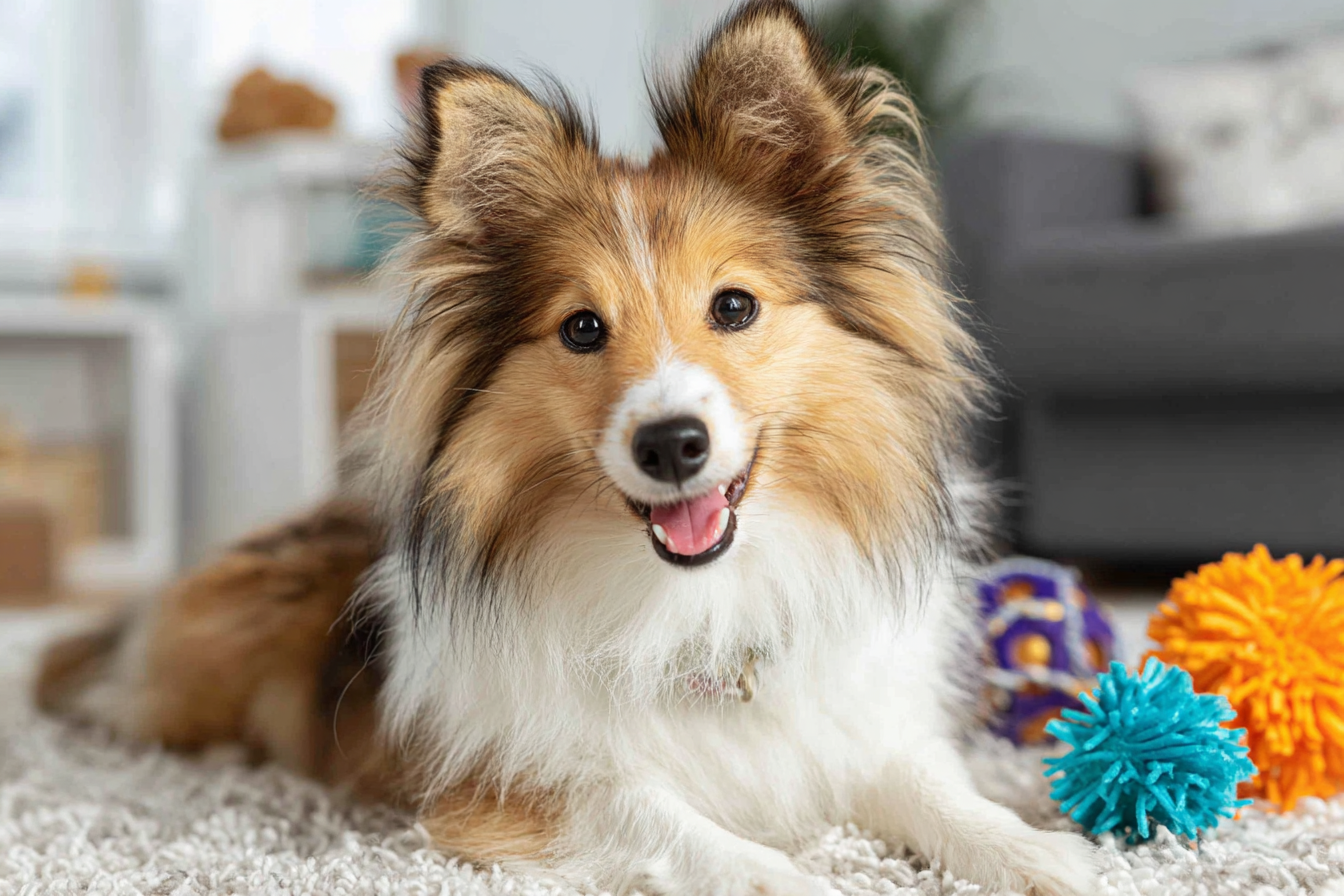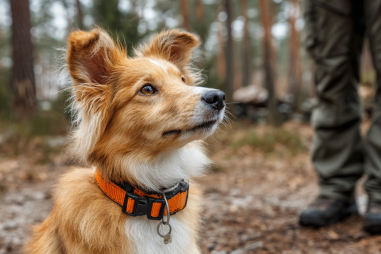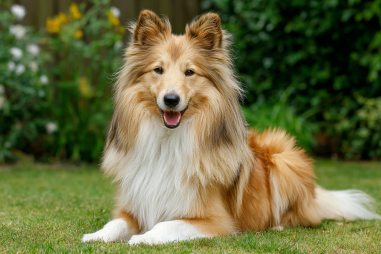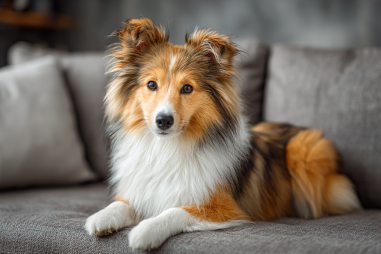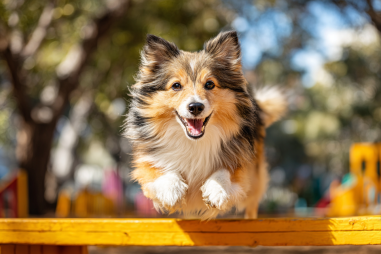Shetland Sheepdogs, commonly known as Shelties, are not just adorable and agile companions—they are also exceptionally intelligent and eager learners. To keep their sharp minds in top shape, mental stimulation is just as crucial as physical exercise. Without enough brain-challenging activities, Shelties can become bored, restless, or even develop unwanted behaviors. Fortunately, there are many fun and effective ways to engage your Sheltie’s mind, offering mental workouts that strengthen your bond while keeping your dog happy and fulfilled.
Why Mental Exercise is Essential for Shetland Sheepdogs
Mental exercise plays a vital role in the overall well-being of Shetland Sheepdogs. These dogs were originally bred for herding, a task that demands alertness, problem-solving skills, and quick thinking. When kept in a modern home without sufficient mental challenges, their natural intelligence can lead to restlessness or destructive behavior. Providing daily mental stimulation helps to reduce anxiety, improve obedience, and increase focus. It also boosts confidence by encouraging your Sheltie to think independently and solve problems on their own.
Engaging your dog’s mind through activities mimics the way they would work in their natural environment. This not only keeps them sharp but also promotes emotional balance and overall happiness. Mental exercise can be as simple as hiding treats or as involved as learning new tricks. The key is consistency and creativity to prevent your Sheltie from getting bored.
Puzzle and Interactive Toys: Brain Teasers for Your Sheltie
One of the best ways to deliver mental stimulation is through puzzle and interactive toys. These toys require Shelties to use reasoning skills and patience to uncover hidden treats or solve challenges. Popular options for Shelties include treat-dispensing balls, slide-and-reveal puzzles, and interactive games with compartments or levers.
These toys provide a dual benefit: your dog gets a tasty reward, and their brain gets a workout. When selecting puzzle toys, keep your dog’s size and skill level in mind. Start with simpler puzzles and gradually increase the difficulty to maintain engagement.
- Treat-dispensing balls that roll and release kibble as the dog plays
- Puzzle boards with sliding doors or drawers to find hidden treats
- Interactive games that require manipulation of parts to release rewards
Rotate toys regularly to keep things fresh and prevent your Sheltie from losing interest.
Training Games That Challenge and Entertain
Training isn’t just for obedience—it can also be a fantastic way to stimulate your Sheltie mentally. Shelties thrive on learning new commands, tricks, and even complex tasks. Using positive reinforcement training techniques, you can introduce games that make your dog think and problem-solve.
Try teaching tricks such as “spin,” “crawl,” or “fetch specific items” to stretch your dog’s mental capacity. You can also combine commands into sequences or add distractions to increase difficulty. Clicker training is highly effective for engaging Shelties in these mentally challenging training games, as it provides clear, consistent feedback.
- “Find it” games where your dog locates hidden objects or treats
- Obstacle courses with commands at various stations
- Memory games that repeat sequences of tricks
Training games not only engage your dog’s brain but also strengthen your relationship and provide a sense of accomplishment for your Sheltie.
Daily Routines to Keep the Mind Engaged
Incorporating mental stimulation into your Sheltie’s daily routine is both simple and highly effective. Even routine activities can be opportunities to challenge their brain and build confidence.
For example, instead of feeding your dog straight from the bowl, try using slow feeder mats or scatter their kibble around for a treasure hunt. Change walking routes frequently to expose your dog to new smells and sights, stimulating their senses.
Adding verbal commands during playtime or asking your Sheltie to perform a command before receiving a toy or treat keeps their mind active through repetition and problem-solving. Consistency is key; mental exercises should be part of your dog’s everyday schedule to maintain their sharpness and prevent boredom.
The Benefits of Varied Mental Activities
Diversifying the types of mental activities you provide your Shetland Sheepdog has multiple benefits. Different challenges engage various parts of your dog’s cognitive abilities, including memory, problem-solving, scent work, and decision-making.
Varied activities keep your Sheltie from falling into a routine that becomes predictable and boring. When mentally stimulated through new experiences, your dog is less likely to develop negative behaviors such as chewing, digging, or excessive barking. Plus, it increases their adaptability and eagerness to learn new things in general.
Variety also ensures that your Sheltie is mentally balanced. For example, a mix of interactive toys during quiet time, training games in the afternoon, and scent-based outdoor challenges combines fun with effective mental workouts.
Social Interaction as a Form of Mental Stimulation
Shelties are naturally social dogs and thrive on interaction with people and other dogs. Socializing your Sheltie is an excellent form of mental stimulation as it requires them to interpret social cues, respond appropriately, and adapt to changes in their environment.
Playdates with other dogs, trips to dog parks, or group training classes all provide opportunities for cognitive and emotional development. Social interactions challenge your dog to process and remember new experiences, strengthening social skills and reducing anxiety or fearfulness.
Additionally, spending quality time with your Sheltie through interactive games or training sessions fosters trust and communication, both of which are mentally beneficial.
Outdoor Mental Challenges to Keep Your Sheltie Sharp
Outdoor activities offer a rich environment full of sights, sounds, and smells that naturally stimulate your Sheltie’s mind. Beyond the physical exercise, these environments challenge dogs to think and problem-solve.
Try incorporating scent trails or tracking exercises where your Sheltie follows a hidden scent path, engaging their powerful nose and brain simultaneously. You can also set up simple agility courses or scavenger hunts in your yard or at the park.
Taking your Sheltie hiking or exploring new trails exposes them to novel stimuli and requires them to navigate different terrains, all promoting mental alertness. Just be sure the challenges are safe and appropriate for your dog’s fitness and skill level.
Resources for Fun and Effective Mental Stimulation
To help you get started or expand your Sheltie’s mental workout toolbox, here are some excellent resources and ideas:
- Toys: Brands like Outward Hound and Nina Ottosson specialize in dog puzzles and interactive toys designed for mental engagement.
- Training Tools: Clickers, treat pouches, and agility sets are small investments with big returns for mental enrichment.
- Books and Online Courses: Titles like “The Art of Raising a Puppy” and online platforms offering dog training tutorials provide excellent insights.
- Local Dog Clubs: Join herding, agility, or obedience clubs to connect with other Sheltie owners and discover group learning opportunities.
With consistent mental stimulation incorporated into daily life and a bit of creativity, your Sheltie will stay sharp, happy, and well-balanced.
Enhancing Your Sheltie’s Life Through Mental Engagement
Caring for a Shetland Sheepdog means meeting their need for mental challenges as much as physical activity. Providing your Sheltie with puzzle toys, training games, varied daily routines, social experiences, and outdoor adventures will ensure a well-rounded and happy dog. These fun mental stimulation activities not only curb boredom but also reduce behavioral issues and make your Sheltie a more confident, content companion. The key is variety, patience, and enthusiasm—introduce new challenges regularly, celebrate successes, and enjoy watching your smart Sheltie thrive!

